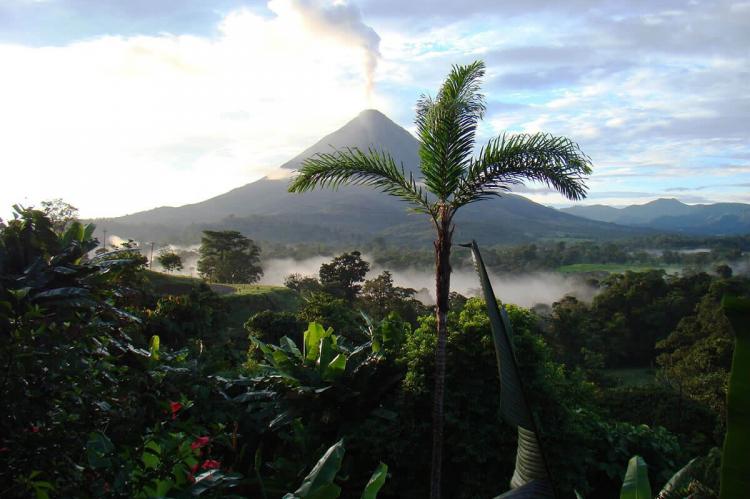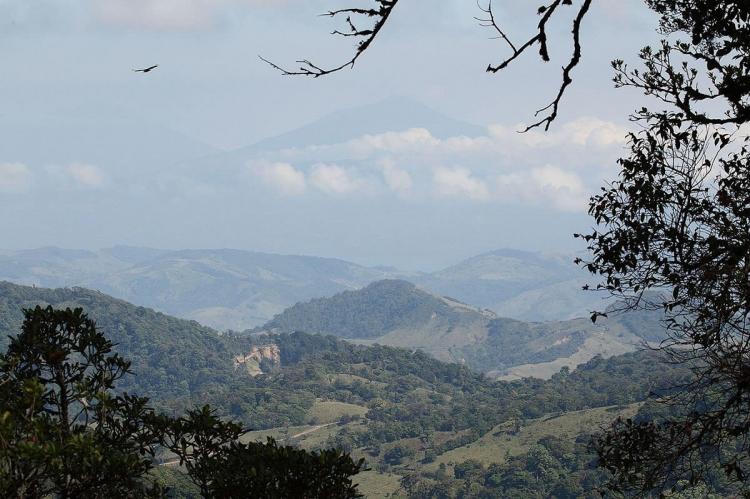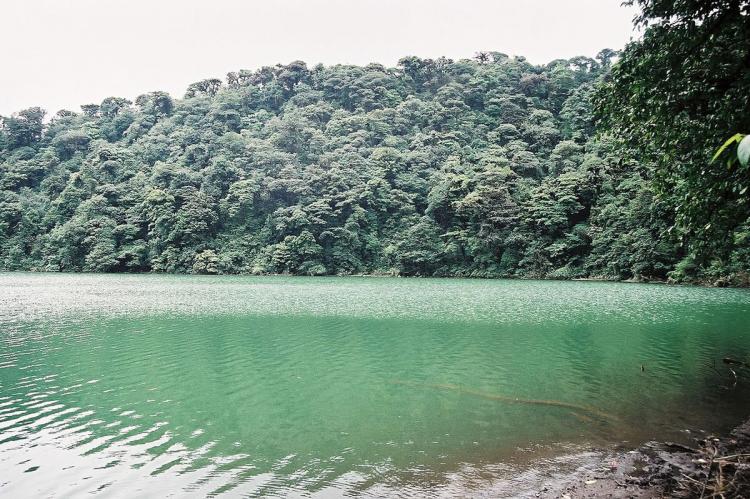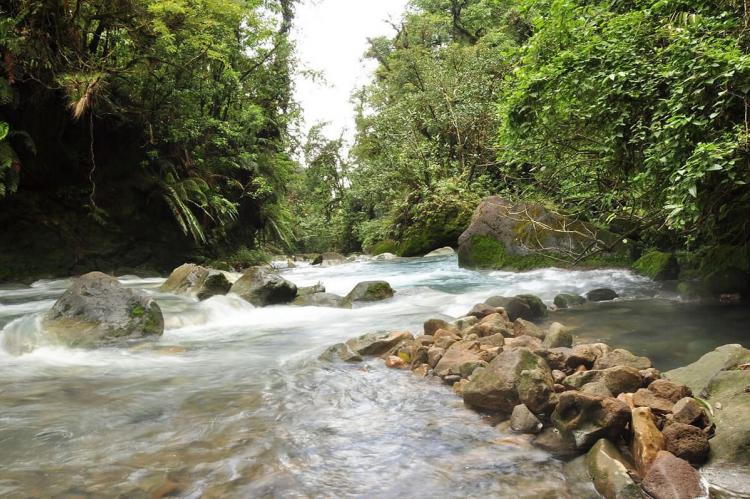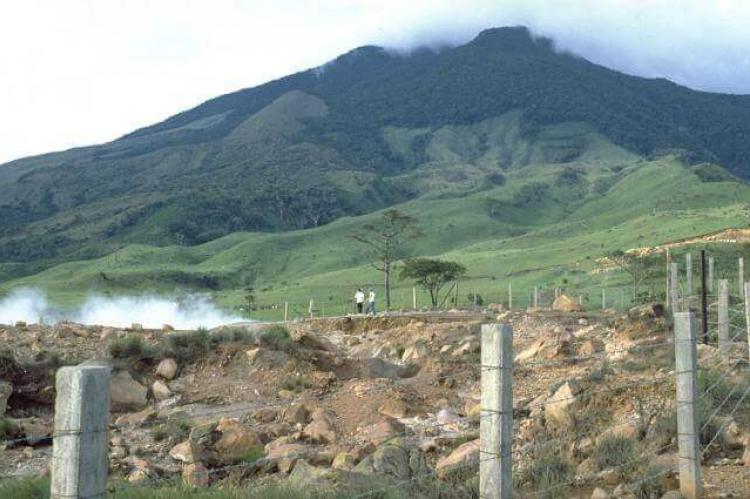Agua y Paz Biosphere Reserve: Costa Rica's Water and Peace Sanctuary
Costa Rica is renowned for its dedication to environmental conservation. One of the country's most striking examples is the Agua y Paz Biosphere Reserve, which is a testament to the country's efforts to harmonize ecological preservation with sustainable human development.
From Volcanoes to Wetlands: Exploring the Rich Landscapes of Agua y Paz Biosphere Reserve
Costa Rica is renowned for its dedication to environmental conservation, and one of the country's most striking examples is the Agua y Paz Biosphere Reserve. This reserve, spanning a vast territory of 916,000 hectares (2,263,000 acres), is a testament to the country's efforts to harmonize ecological preservation with sustainable human development. Named "Water and Peace" to reflect its rich water resources and role in fostering peaceful coexistence with nature, the reserve covers diverse landscapes, from towering volcanoes to wetlands, making it a biodiversity hotspot.
Geographic Overview
The Agua y Paz Biosphere Reserve is located in northern Costa Rica, covering parts of several provinces. Its terrain is characterized by contrasting geographical features: mountain ranges dominate its southern regions, while expansive plains, lakes, and wetlands stretch across its northern portions. These ecosystems are home to countless species of flora and fauna and serve as critical water sources for the surrounding human populations.
Mountainous Zones and Volcanoes
The reserve's mountainous zones include a series of prominent volcanoes, such as Miravalles, Tenorio, Arenal, Chato, and Platanar. Each contributes to the region's unique topography and diverse ecosystems. For instance, the Arenal Volcano is one of Costa Rica's most famous landmarks. At the same time, the Tenorio Volcano National Park is known for its Rio Celeste, a river renowned for its brilliant blue waters due to volcanic minerals.
Plains, Lakes, and Wetlands
In the lower-lying plains, the reserve features numerous wetlands and lakes, including Lake Caño Negro, a Ramsar-listed wetland of international importance. These wetlands provide essential habitats for migratory birds and endangered species. During the rainy season, the Frío River feeds Lake Caño Negro, turning the area into a network of flooded forests and marshes that serve as critical breeding grounds for aquatic life.
Protected Areas and Conservation Management
The Agua y Paz Biosphere Reserve includes eight core protected wildlife areas managed by Costa Rica's National System of Conservation Areas (SINAC). These protected areas are divided among three of SINAC's 11 conservation regions: the Arenal Huetar Norte Conservation Area (ACAHN), the Arenal-Tempisque Biosphere Reserve (ACAT), and the Cordillera Central Volcanic Conservation Area (ACCVC). Together, these areas form the backbone of the biosphere reserve's efforts to preserve biodiversity while promoting sustainable land use.
The reserve encompasses a mix of national parks, wildlife refuges, and biological corridors, making it one of the most complex and ecologically rich regions in Costa Rica. Some of the most notable protected areas include:
Juan Castro Blanco National Park: A Rainforest Oasis
Juan Castro Blanco National Park, often referred to as Parque de Aguas, is a critical part of the Arenal Huetar Norte Conservation Area. Established in 1992, this park spans rainforests and cloud forests and protects three volcanic peaks: the active Platanar Volcano, the dormant Porvenir Volcano, and the inactive El Viejo Volcano. The park's diverse ecosystems offer sanctuary to a wide array of species.
The park is also an important water source for the region, as it contains the headwaters of major rivers, such as the Aguas Zarcas, Platanar, Tora, Tres Amigos, and La Vieja. Its extensive trail network allows visitors to experience the region's rich biodiversity, which includes 57 recorded mammal species like tapirs, ocelots, and howler monkeys, as well as 233 bird species, including the national bird of Costa Rica, the clay-colored robin. Endangered species like the quetzal, curassow, and black guan also make their home in the park.
Caño Negro National Wildlife Refuge: A Wetlands Wonder
The Caño Negro National Wildlife Refuge, another significant component of the reserve, is a Ramsar site known for its importance as a wetland ecosystem. The refuge is a haven for migratory birds and endangered species, particularly during the dry season when the Frío River reduces to a series of lagoons, creating vital habitats for wildlife.
This rich mosaic of forests, grasslands, and marshes shelters endangered species such as jaguars, tapirs, cougars, and peccaries, as well as several species of monkeys like the white-headed capuchin, mantled howler, and Geoffroy's spider monkey. Birdwatchers from around the world come to witness the massive congregations of migratory birds, including storks, spoonbills, ibis, ducks, and anhingas.
Indigenous Communities and Cultural Heritage
The Agua y Paz Biosphere Reserve is a natural sanctuary and a land of cultural significance. The region is home to several indigenous communities, including the Maleku people, who have inhabited these lands for centuries. Their traditional knowledge of the environment and sustainable living practices have been integral to the area's conservation efforts. These communities, like the Maleku in the Guatuso region, live in harmony with the environment, using resources to ensure the protection and regeneration of natural habitats.
Conservation and Sustainable Development
The Agua y Paz Biosphere Reserve faces numerous challenges in maintaining its delicate balance between ecological conservation and human development. One of the reserve's central goals is to promote sustainable development that allows human populations—particularly the region's approximately 300,000 inhabitants, most of whom live in rural areas—to thrive without harming the environment.
SINAC's work within the biosphere reserve reflects Costa Rica's commitment to conservation. Biological corridors, established to connect fragmented habitats, play a crucial role in promoting species migration and maintaining biodiversity. These corridors also help mitigate the effects of human activities such as agriculture, logging, and urbanization.
Water and Peace: A Reflection of Costa Rica's Environmental Vision
The Agua y Paz Biosphere Reserve is a living symbol of Costa Rica's vision for environmental sustainability. The name "Water and Peace" represents the critical role the region plays in preserving vital water resources while fostering peaceful coexistence between humans and nature. Through its vast wetlands, rivers, and forests, the reserve provides ecological services—such as water regulation and carbon sequestration—and a home for countless species of plants and animals.
Conclusion
The Agua y Paz Biosphere Reserve is a testament to Costa Rica's innovative approach to conservation. Encompassing a vast array of ecosystems—from towering volcanic peaks to Ramsar-designated wetlands—the reserve showcases the country's dedication to preserving its natural heritage while promoting sustainable development. Its protected areas, such as Juan Castro Blanco National Park and Caño Negro National Wildlife Refuge, harbor some of the most endangered and unique species in the region. By balancing conservation with human well-being, the Agua y Paz Biosphere Reserve continues to serve as a model for ecological stewardship, offering both natural beauty and essential resources for future generations.
